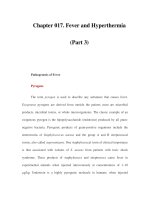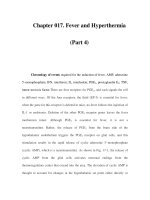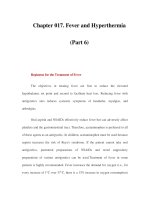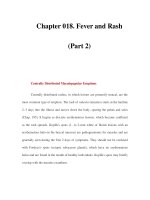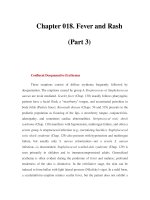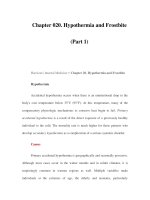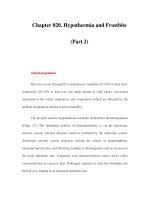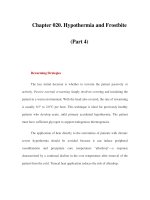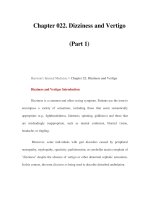Chapter 022. Dizziness and Vertigo (Part 6) pot
Bạn đang xem bản rút gọn của tài liệu. Xem và tải ngay bản đầy đủ của tài liệu tại đây (12.17 KB, 5 trang )
Chapter 022. Dizziness and Vertigo
(Part 6)
a
All listed drugs are U.S. Food and Drug Administration approved, but
most are not approved for the treatment of vertigo.
b
Usual oral (unless otherwise stated) starting dose in adults; maintenance
dose can be reached by a gradual increase.
c
For acute vertigo only.
d
For motion sickness only.
e
For benign paroxysmal positional vertigo.
f
For vertigo other than Ménière's and positional.
g
For Ménière's disease.
h
For migraine-associated vertigo (see Chap. 15 for a listing of prophylactic
antimigrainous drugs).
i
For perilymphatic fistula and refractory cases of Ménière's
disease.Posterior semicircular canal BPPV, the most common type, is often self-
limited but, when persistent, may respond dramatically to specific repositioning
exercise programs designed to empty particulate debris from the canal. One of
these exercises, the Epley procedure, is graphically demonstrated, in four
languages, on a website for use in both physicians' offices and self-treatment
(www.charite.de/ch/neuro/vertigo.html).
Prophylactic measures to prevent recurrent vertigo are variably effective.
Antihistamines are commonly utilized but are of limited value. Ménière's disease
may respond to a diuretic or, more effectively, to a very low salt diet (1 g/d).
Recurrent episodes of migraine-associated vertigo should be treated with
antimigrainous therapy (Chap. 15). There are a variety of inner ear surgical
procedures for refractory Ménière's disease, but these are only rarely necessary.
Psychogenic ("phobic postural") vertigo is best treated with cognitive-
behavioral therapy.
Helpful websites for both physicians and vertigo patients are:
www.iVertigo.net and www.tchain.com.
Global Considerations
There are no epidemiologic studies indicating an increased frequency of
specific types of vertigo in different geographical areas. However, whereas BPPV
of the posterior semicircular canal is overwhelmingly the most common form of
positional vertigo in most countries, there seems to be an unusually large number
of reports of horizontal (lateral) BPPV from Italy and Korea.
Further Readings
Dieterich M: Dizziness. The Neurologist 10:154, 2004 [PMID: 15140275]
Halmagi GM: Diagnosis and management of vertigo. Clin Med 5:159, 2005
Leigh RJ, Zee DS: Neurology of Eye Movement, 4th ed. New York, Oxford,
2006, pp 76–79; 559–597
Strupp M et al: Methylprednisolone, valacyclovir, or the combination for
vestibular neuritis. N Engl J Med 351:354, 2004 [PMID: 15269315]
———, Brandt T: Pharmacological advances in the treatment of neuro-
otological and eye movement disorders. Curr Opin Neurol 19:33, 2006
White J et al: Canalith repositioning for benign paroxysmal positional
vertigo. Otol Neurotol 26:704, 2005 [PMID: 16015173]
Zingler VC et al: Causative factors and epidemiology of bilateral
vestibulopathy in 255 patients. Ann Neurol 61:524, 2007 [PMID: 17393465]
Bibliography
Holmberg J et al: Treatment of phobic postural vertigo. A controlled study
of cognitive-behavioral therapy and self-controlled desensitization. J Neurol
253:500, 2006 [PMID: 16362533]
